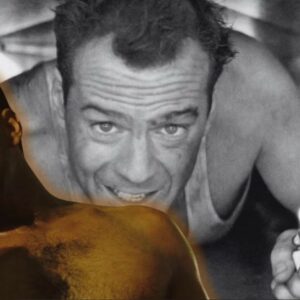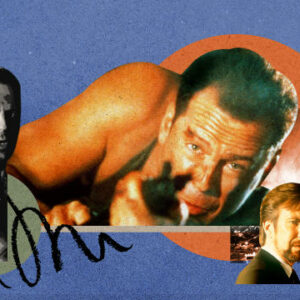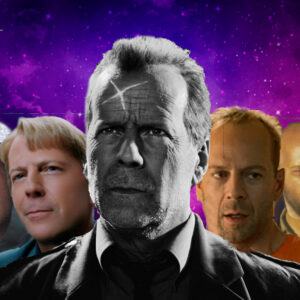Fight Club (1999) is a film that, despite its initially divisive reception, has grown into a cultural phenomenon with an enduring legacy. Directed by David Fincher, the film is now widely regarded as one of the most iconic cinematic pieces of the late 20th century. What makes Fight Club so compelling and transformative, however, is not just its unforgettable plot or avant-garde approach to filmmaking. It is its thematic boldness, its deep psychological undercurrents, and the way it provocatively tackled issues such as consumerism, identity, and masculinity. Above all, Fight Club brought Brad Pitt’s career to new heights, forever associating him with one of the most complex, controversial characters in modern film history: Tyler Durden.
In this article, we will explore how Fight Club became the landmark film it is today, looking at the behind-the-scenes story of its creation, the transformative journey of Brad Pitt as Tyler Durden, and the lasting cultural impact of the film.
The Making of Fight Club
Before Fight Club became a cultural touchstone, it was a daring gamble. The film was adapted from Chuck Palahniuk’s 1996 novel of the same name, which immediately raised eyebrows for its nihilistic content and its critique of modern society. The novel’s exploration of consumerism and the empty pursuit of material wealth was ripe for a cinematic adaptation, but translating it into a visual medium posed unique challenges.
The first and most critical challenge was finding a director with the vision to bring the controversial material to life. David Fincher, who had already made a name for himself with Se7en (1995), was chosen to helm the project. Fincher’s ability to balance the grotesque and the poetic would be vital in telling the Fight Club story. Known for his meticulous approach to filmmaking, Fincher collaborated closely with screenwriter Jim Uhls to adapt Palahniuk’s novel into a screenplay that maintained the raw energy and dark humor of the source material.
The production faced significant hurdles even before the cameras started rolling. Fight Club had a relatively modest budget for a film of its scale—around $63 million—and it was clear from the outset that the film’s unflinching critique of consumer culture, along with its graphic violence and dark themes, would not sit well with mainstream audiences. Despite its unconventional narrative and mature content, the team pressed forward, fully aware that they were creating something radically different from the norm.
Brad Pitt’s Transformative Experience
No one could have anticipated how transformative the film would be for Brad Pitt’s career. At the time, Pitt was primarily known for his roles in heartthrob-centric films like Legends of the Fall (1994) and Thelma & Louise (1991). He had not yet fully embraced the darker, more complex characters that would define his later career.
Enter Tyler Durden: a charismatic, anarchistic figure who leads a group of disenfranchised men in an underground fight club as a form of resistance against modern society. Durden’s philosophy of rejecting consumerism and embracing chaos was a stark departure from the roles Pitt had previously played, and it required him to physically, mentally, and emotionally transform himself.
To embody Tyler Durden, Pitt underwent an intense physical transformation, shedding any semblance of his previous clean-cut Hollywood image. He put on muscle, adopted a rougher, more rugged look, and took on a wild, untamed persona that would captivate audiences. His physicality—his chiseled abs, scruffy hair, and smoldering presence—became iconic in its own right. But Pitt’s transformation went far beyond the physical.
Pitt worked meticulously on understanding the complexities of Durden’s character, a man who thrives on chaos and destruction, seeking to wake others from the suffocating grip of consumer culture. Tyler Durden is a figure of empowerment, but his empowerment is deeply flawed, stemming from a misguided attempt to strip away the constraints of modern society. To portray this complexity, Pitt had to tap into a deeper part of himself, one that challenged his previous on-screen personas and forced him to grapple with themes of alienation and self-destruction.
The role of Tyler Durden took a mental and emotional toll on Pitt. He admitted that the character’s worldview resonated with him on a personal level, leading to a period of introspection during the shoot. He even took some of Durden’s ideologies into his personal life, briefly adopting some of the anti-materialistic views of the character. While the intensity of the role led to some personal challenges, it also resulted in one of Pitt’s most iconic performances, turning Tyler Durden into a figure that would be forever etched in pop culture.
The Legacy of Fight Club
When Fight Club was released in 1999, its reception was far from universally positive. Critics and audiences were divided by its graphic violence, its critique of consumerism, and its portrayal of toxic masculinity. It was controversial, divisive, and sometimes incomprehensible to those expecting a more traditional narrative. However, over time, the film began to gain a cult following.
The themes of Fight Club—especially its exploration of masculinity—have only become more relevant in the years since its release. In a time when toxic masculinity and the pressures of modern life are hot-button issues, Fight Club continues to resonate with younger generations of men who feel trapped in the expectations of consumer culture and rigid gender norms. The film presents a stark critique of traditional notions of manhood and offers a glimpse into the emotional and psychological toll that these societal pressures can have. At the same time, Fight Club exposes the destructive consequences of attempting to reject these norms by embracing anarchistic ideals. The very idea of rejecting materialism and embracing chaos ends up being just another form of consumerism, one that ultimately leaves the characters feeling emptier than before.
The film also stands out for its groundbreaking approach to storytelling, particularly its unexpected plot twist. Fight Club’s final revelation, where it is revealed that the narrator (played by Edward Norton) and Tyler Durden are the same person, challenges the audience’s perceptions and calls attention to the film’s deeper themes of self-identity and fragmentation. The film’s innovative narrative structure, combined with its visual style, makes it a unique and unforgettable viewing experience.
Brad Pitt’s portrayal of Tyler Durden is central to the film’s success. Without Pitt’s charismatic, multifaceted performance, the character might have simply become another cult icon, but Pitt’s ability to bring depth and nuance to Durden transformed him into one of the most memorable characters in modern cinema. His presence in Fight Club transcends the film itself, turning Tyler Durden into a symbol of defiance and liberation, albeit one with a dark and ultimately destructive edge.
Today, Fight Club is often cited as one of the greatest films of the 1990s, its impact rippling through popular culture. It has been referenced in countless other films, television shows, and even advertisements, solidifying its status as a cultural touchstone. The film’s themes—its critique of consumerism, its exploration of identity, and its deconstruction of masculinity—continue to spark debate and reflection, ensuring that Fight Club remains a relevant part of the cultural conversation more than two decades after its release.
Conclusion
Fight Club has left an indelible mark on the cinematic world, and much of its success can be attributed to Brad Pitt’s unforgettable portrayal of Tyler Durden. Pitt’s transformative experience on set not only elevated his career but also ensured that Fight Club would be remembered as a bold and groundbreaking film that reshaped the way we think about identity, masculinity, and modern life.
The film’s shift from a divisive release to a beloved cult classic speaks volumes about its lasting cultural relevance. As a cinematic work, Fight Club challenges its audience to question the world around them, and as a performance, Brad Pitt’s turn as Tyler Durden has cemented the film’s place in history. Decades later, Fight Club continues to inspire new generations of fans and filmmakers alike, proving that sometimes, in the world of film, chaos can lead to something truly lasting.





